
Food Safety Focus (22nd Issue, May 2008) – Incident in Focus
Mercury in Fish and Food Safety
Reported by Dr. Anna S.P. TANG, Scientific Officer,
Risk Assessment Section, Centre for Food Safety
On 16 April 2008 , the Centre for Food Safety (CFS) released the findings of the risk assessment study "Mercury in Fish and Food Safety" . Most of the fish available in the Hong Kong market contained relatively low levels of mercury, while a small proportion contained higher levels. Level of mercury in fish depends on their species, age, food sources and living environments. Results of this study together with reports from other countries showed that high mercury levels were usually found in some predatory fish species such as shark, swordfish, marlin, alfonsino and some types of tuna, while lower levels were found in fish such as salmon, sardine, grass carp, mud carp, grey mullet, pomfret, rabbitfish, bighead carp, horsehead, yellow croaker, mandarin fish, golden thread and bigeye. Since the level of mercury for individual fish may vary according to the source and living environment, consumers are advised to consume a variety of fish.
Fish contains many nutrients essential for growth and development. It provides many benefits to health when taken in moderation as part of a balanced diet. However, pregnant women and children should avoid consumption of certain fish species that may contain high mercury levels since they are more susceptible to the adverse effects of mercury.
Illustration: Examples of fish that contain higher levels of mercury
|
Orange roughy
|
Swordfish
|
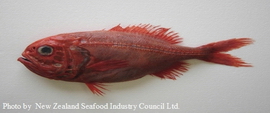 |
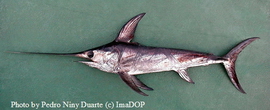 |
|
Alfonsino
|
Tilefish
|
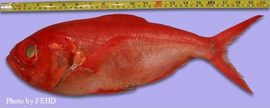 |
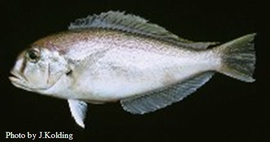 |
|
Bluefin tuna
|
Bigeye tuna
|
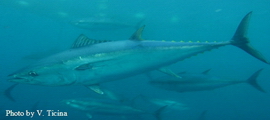 |
 |
|
Shark
|
Marlin
|
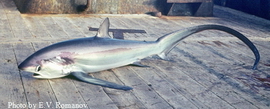 |
 |
Illustration: Examples of fish that contain lower levels of mercury
|
Salmon
|
Grey mullet
|
 |
 |
|
Mandarin fish
|
Mud carp
|
 |
 |
|
Yellow croaker
|
Sardine
|
 |
 |
|
Bigeye
|
Pomfret
|
 |
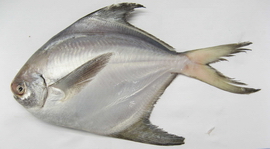 |
What is Mercury and Why is it Present in Fish?
Mercury is a metal present widely in the environment. Most people are familiar with its use in thermometers as a silver liquid at room temperature. However, this metal may also combine with other elements in nature to form inorganic salts or may bind to organic matters as methylmercury.
Through volcanic eruptions and mining activities, mercury in the earth's crust can be exposed to the environment and get into rivers and oceans. Industrial waste further adds to mercury emissions. Micro-organisms in the aquatic system convert inorganic mercury to methylmercury. Fish that eat these micro-organisms accumulate methylmercury which goes up the food chain when larger fish eat smaller fish.
Methylmercury:
- is present at higher levels in large predatory fish;
- is particularly harmful to developing brain of foetus;
- cannot be reduced by cooking.
Health Concerns of Methylmercury
Methylmercury is the most toxic form of mercury affecting the nervous system, particularly the developing brain. Fish is the main source of methylmercury in the diet. Methylmercury is easily absorbed into the human body through the gastrointestinal tract and readily enters the brain. At high levels, methylmercury can affect foetal brain development, and affect vision, hearing, muscle coordination and memory in adults.
Safe Intake Level
A safe intake level for methylmercury has been established by the Joint Food and Agriculture Organization/ World Health Organization Expert Committee on Food Additives (JECFA) to protect the most susceptible group, i.e. the developing foetus. This level, called the Provisional Tolerable Weekly Intake (PTWI), is set at 1.6 μg/kg body weight.
It is important that the intake of methylmercury in pregnant women and women of child-bearing age should not exceed the PTWI. Since it takes a relatively long time for methylmercury to be cleared from the body, women planning pregnancy should avoid intake of fish high in mercury levels from at least half a year before pregnancy.
Eating Fish with Maximum Benefits and Minimum Risks
The total dietary exposure to mercury depends on the mercury level present in foods and the amount of the foods consumed. The amount of fish that can be consumed safely within specific period of time (eg. per week) would be less for fish containing higher mercury levels than for fish containing lower mercury levels. It is therefore advisable to consume a variety of fish and not to overindulge in only a few species. In order to get the most benefits from eating fish while minimising the risk posed by methylmercury, moderate consumption is the key.
Estimation based on the results of the current and previous studies showed that dietary exposure to methylmercury among secondary school students fell well below the PTWI for average consumers. However, the PTWI may be exceeded for high consumers, which means that the adverse effect of methylmercury cannot be excluded for these people.
Advice to Consumers
-
Maintain a balanced diet. Avoid overindulgence of food items.
-
Fish contain many essential nutrients, such as Omega-3 fatty acids and high quality proteins. Moderate consumption of a variety of fish is recommended.
-
Pregnant women, women planning pregnancy and young children should avoid the types of fish which may contain high levels of mercury in their diet.
Advice to the Trade
-
Obtain food supplies from reliable sources.
-
Maintain proper records to enable source tracing when required.
-
Inform customers of the type of fish that is sold, served, or used in fish products.

